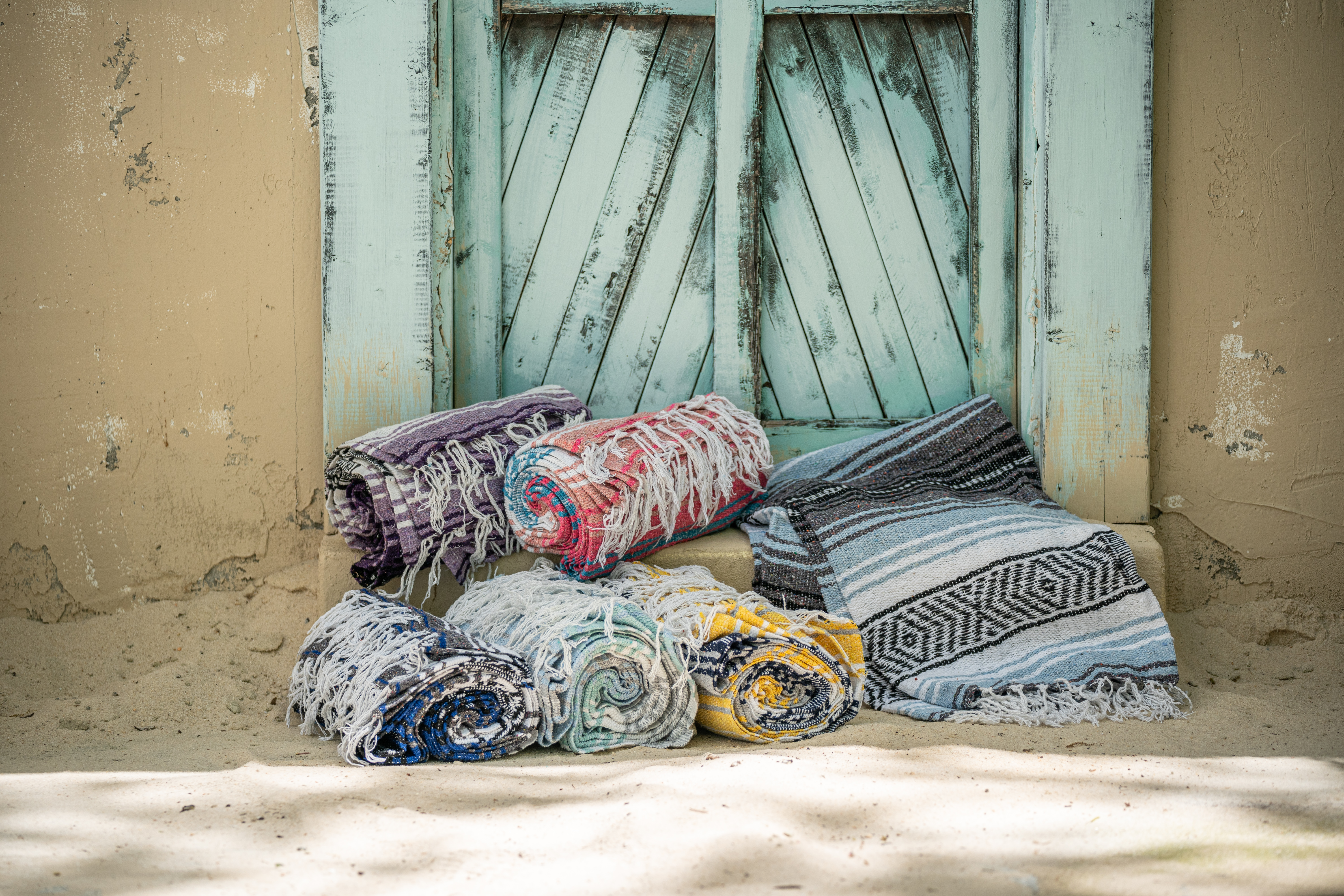The History of Mexican Blankets: From Indigenous Roots to Modern-Day Charm
Posted by Josiah S. on 18th Apr 2024
Mexican blankets, with their vivid colors and alluring patterns, are cultural icons and a testament to centuries of textile evolution. These blankets, known traditionally as serapes or saltillos, carry a history as rich and varied as the threads woven into each piece. In this post, we'll explore these captivating textiles' origins, traditional techniques, and generational legacy.
Origins and Evolution
The story of Mexican blankets begins with the indigenous peoples of Mexico, including the Aztecs and the Maya. Initially, these textiles were woven for practical uses such as clothing and protection against the cold. They were crafted from locally sourced fibers, including cotton in the tropical lowlands and agave and wool in the highlands.
During the colonial period, the introduction of Spanish weaving techniques and sheep's wool transformed the craft. This fusion of methods brought about the serape as we know it today—a lighter, more versatile textile. Traditionally, serapes were vibrant in color, with central panels that exploded in radiant geometric patterns, flanked by intricate borders and fringe.

Traditional Weaving Techniques
Mexican blankets are renowned for their intricate weaving techniques, refined over generations. The primary method used is the pedal loom, introduced by the Spanish in the 1500s. This type of loom allows for the efficient creation of more significant textiles, making it ideal for blanket and serape production.
- Preparation of the Yarn: The process begins with spinning the wool into yarn. Depending on the desired hues, The yarn is dyed using natural or synthetic dyes. Traditional natural dyes are made from local plants and insects, such as the cochineal for red tones.
- Setting Up the Loom: The yarn is mounted onto the loom. The setup of the warp (the set of lengthwise yarns) and the weft (the transverse threads) is critical as it determines the blanket's foundational structure and patterns.
- Weaving: Weavers use a repetitive hand-operated motion to interlace the weft and warp together. The weaver's skill at manipulating the weft yarns creates the serape's characteristic vibrant patterns and intricate designs.
- Finishing Touches: Once off the loom, the blankets are washed, and sometimes additional elements like fringes are added. Each blanket is a reflection of the weaver's artistic vision and technical prowess.
Cultural Significance and Modern Day Relevance
Traditionally, serapes were more than just useful objects; they were symbols of identity and pride. Different regions and tribes would have distinctive patterns and colors that denoted their local culture. Today, these blankets have found new roles beyond their functional use, embodying a piece of Mexican heritage in modern fashion, home decor, and even art.
Mexican blankets serve as functional household items and aesthetic enhancements in contemporary settings. They are used in fashion, with patterns being adapted for clothing and accessories. In homes, they brighten rooms as throws, rugs, or wall hangings. Their use in public spaces, like restaurants and hotels, invokes a warm cultural ambiance.
Preservation of a Legacy
The techniques and traditions of Mexican blanket weaving are passed down through generations within families. Artisans continue to respect these age-old methods while innovating with modern designs and applications. Organizations and cooperatives work to preserve this cultural form, ensuring that these skills are not lost to globalization.
Mexican blankets are a vibrant tapestry of history, culture, and art. They remind us of the deep historical roots and the continuous thread of innovation that characterizes much of Mexico's artisanal heritage. As they evolve, these blankets carry forward the stories of the past into the vibrant tapestry of the future, ensuring that the legacy of Mexican textiles continues to unfold in colorful and unexpected ways.

